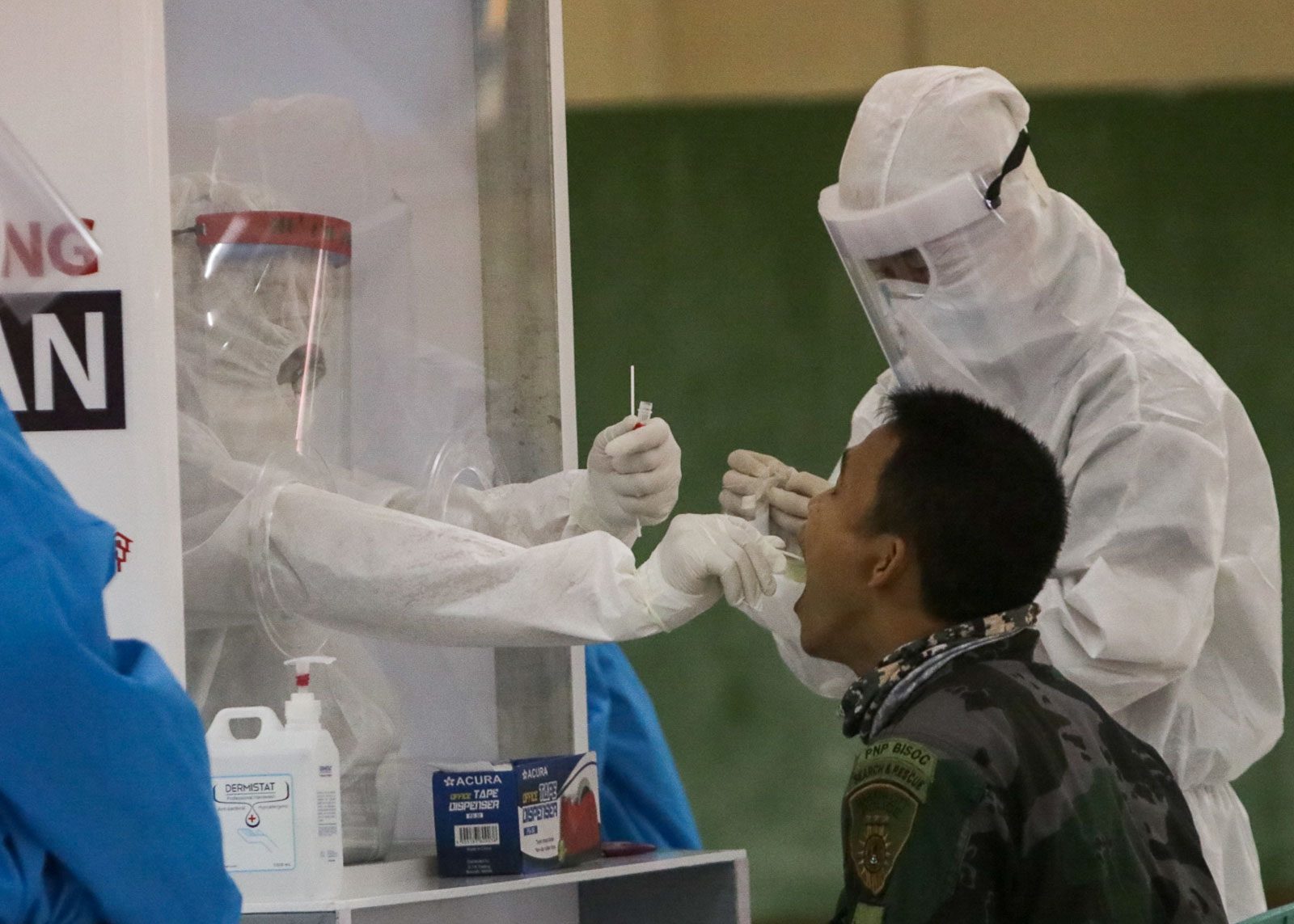SUMMARY
This is AI generated summarization, which may have errors. For context, always refer to the full article.

MANILA, Philippines – Health Undersecretary Maria Rosario Vergeire said it is not “cost-effective” to prioritize the testing of those who do not exhibit coronavirus symptoms because the country’s healthcare system does not have the capacity for it right now.
The Department of Health (DOH) official said this on Wednesday, May 20, to the members of the health and COVID-19 response cluster of the House Defeat COVID-19 committee as the government continues to face backlash for still not doing mass testing even if quarantine measures are already being eased.
“The very reason why we are saying it’s not cost-effective [is] because we are considering the existing resources of the country right now for testing. Alam po nating lahat na napakamaliit pa lang ‘yung ating kapasidad ng testing (We all know that we still have a very small testing capacity),” Vergeire said.
“Our experts were saying, if we are going to allow and if we are going to have these asymptomatics be tested, we might not be able to appropriately focus on those that we are supposed to detect, especially those who are vulnerable and those who are severely ill,” she added.
There are at least 30 accredited facilities nationwide that can test COVID-19 samples. But the Philippines is currently able to conduct only 11,500 tests per day. (READ: Gov’t targets to have 66 coronavirus testing hubs by May 31)
Vergeire also clarified the DOH uses the term “expanded testing” instead of “mass testing,” as the limited capacity is forcing the country to prioritize certain sectors.
These include the following:
- Patients or health workers showing severe or critical symptoms, and who had exposure to a confirmed case or a history of travel
- High-risk or vulnerable patients and health workers showing mild symptoms, and who had exposure to a confirmed case or a history of travel
- Patients or health workers with mild symptoms, and who had exposure to a confirmed case or a history of travel
- Patients or health workers who are asymptomatic but have a history of travel or had exposure to a confirmed case
Vergeire was answering lawmakers’ questions concerning House Bill (HB) No. 6707 authored by ex-DOH chief-turned-Iloilo 1st District Representative Janette Garin, who wants vulnerable sectors of society but who are not necessarily showing symptoms to be prioritized for COVID-19 testing as well.
These include Filipinos who have preexisting medical conditions who now need to go back to work and people entering the country from abroad. HB No. 6707 would provide a testing subsidy between P1,700 and P1,800 per asymptomatic person tested.
But Vergeire said as much as the DOH wants to test more sectors of the population, the healthcare system is simply too overwhelmed right now.
“Kami rin po sa kagawaran ay gusto namin ‘yung ganitong klase na ma-test natin ang mas madami. But based from our capacity right now, ito po ‘yung ating realidad,” she said.
(We in the department also want to have this type of testing where more people are covered. But based from our capacity right now, this is the reality.)
Lockdown cost vs mass testing cost
But this did not sit well with economist-turned-lawmaker Stella Quimbo, who said testing around 10 million Filipinos would cost the government P9 billion compared to the country losing P18 billion per day of lockdown.
“It’s never about the budget. A cost-benefit analysis informs a budget decision. But the budget itself is never a parameter in a cost-benefit analysis. In other words, if there is an activity, like mass testing, which is not costly but the benefits are huge, then you find the budget for that,” the Marikina City 2nd District congresswoman said.
“So what now is the cost of not testing? The cost of not testing is not knowing the asymptomatics…. Hindi tayo makakapagbukas ng ekonomiya (We won’t be able to open our economy) in an effective way. What is the cost of lockdown? P18 billion per day. That is a tremendous cost,” Quimbo said.
Vergeire then said the DOH never said lack of budget was the reason behind the assessment that testing asymptomatics is not cost-effective.
“Currently, our laboratories are choking because of [the] surge in the number of tests that are being done. We have our hospitals which are waiting for the lab results of their patients for 10 to 14 days. We have our communities waiting also for the results of these [tests] that were done among their constituents for a number of days already,” Vergeire said.
“Ang sinasabi lang po namin, tayo po ay nagpa-prioritize para po akma po tayo doon sa kapasidad ng sistema natin…. Maganda po ‘yung proposal [sa bill]. Sana po, maitaas lang natin ‘yung antas nung capacity nung ating health system, nung ating laboratoryo para ma-accommodate po natin ang lahat,” she added.
(What we’re saying is that we’re prioritizing in a way that matches the capacity of our system… The proposal in the bill is good. But I hope we would be able to increase the quality and capacity of our health system, our laboratories, so everyone would be accommodated.)
As of Tuesday, May 19, the Philippines has tallied 12,942 cases of COVID-19, 837 of which were fatal. A total of 2,843 patients have recovered from the disease. – Rappler.com
Add a comment
How does this make you feel?
There are no comments yet. Add your comment to start the conversation.